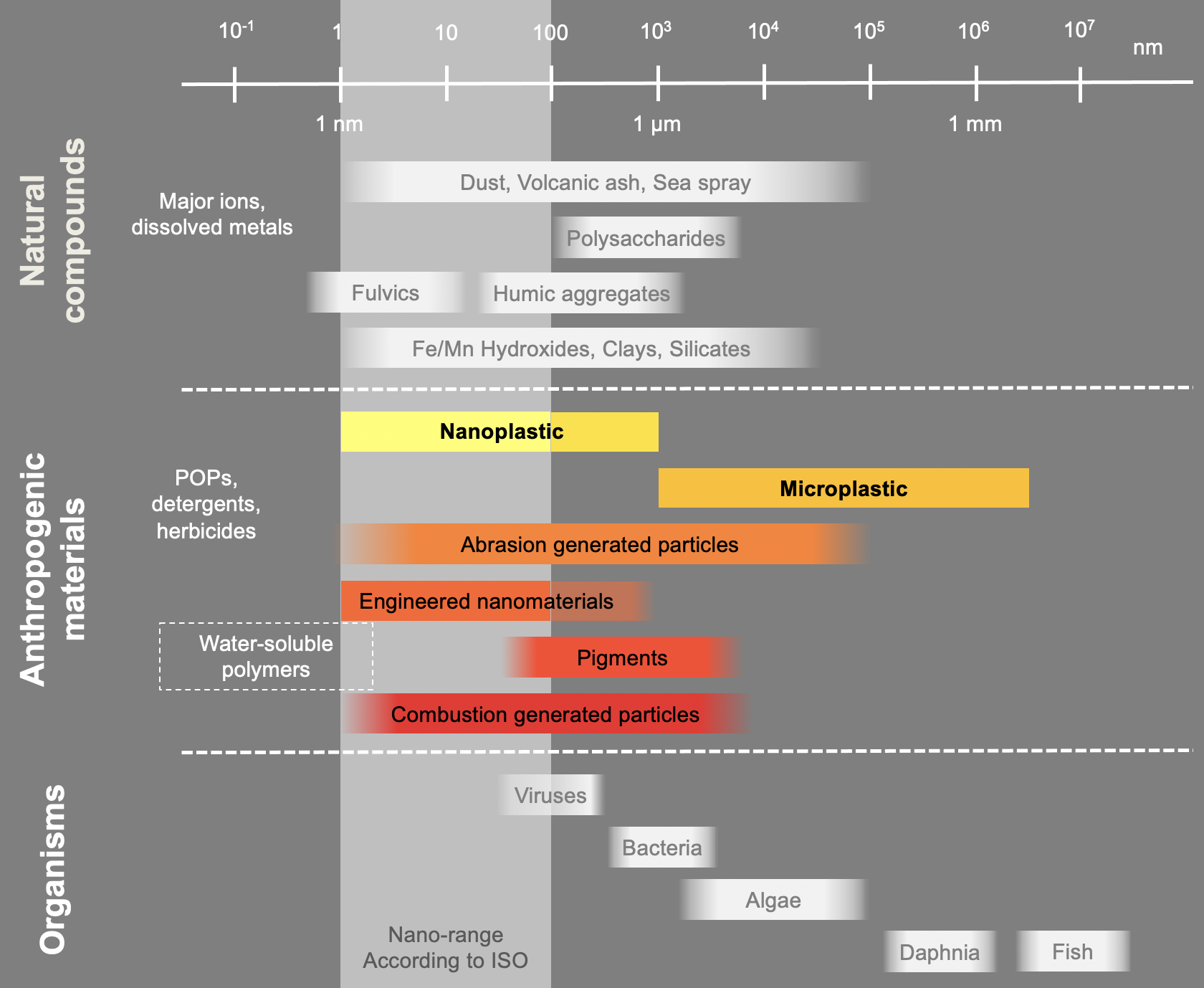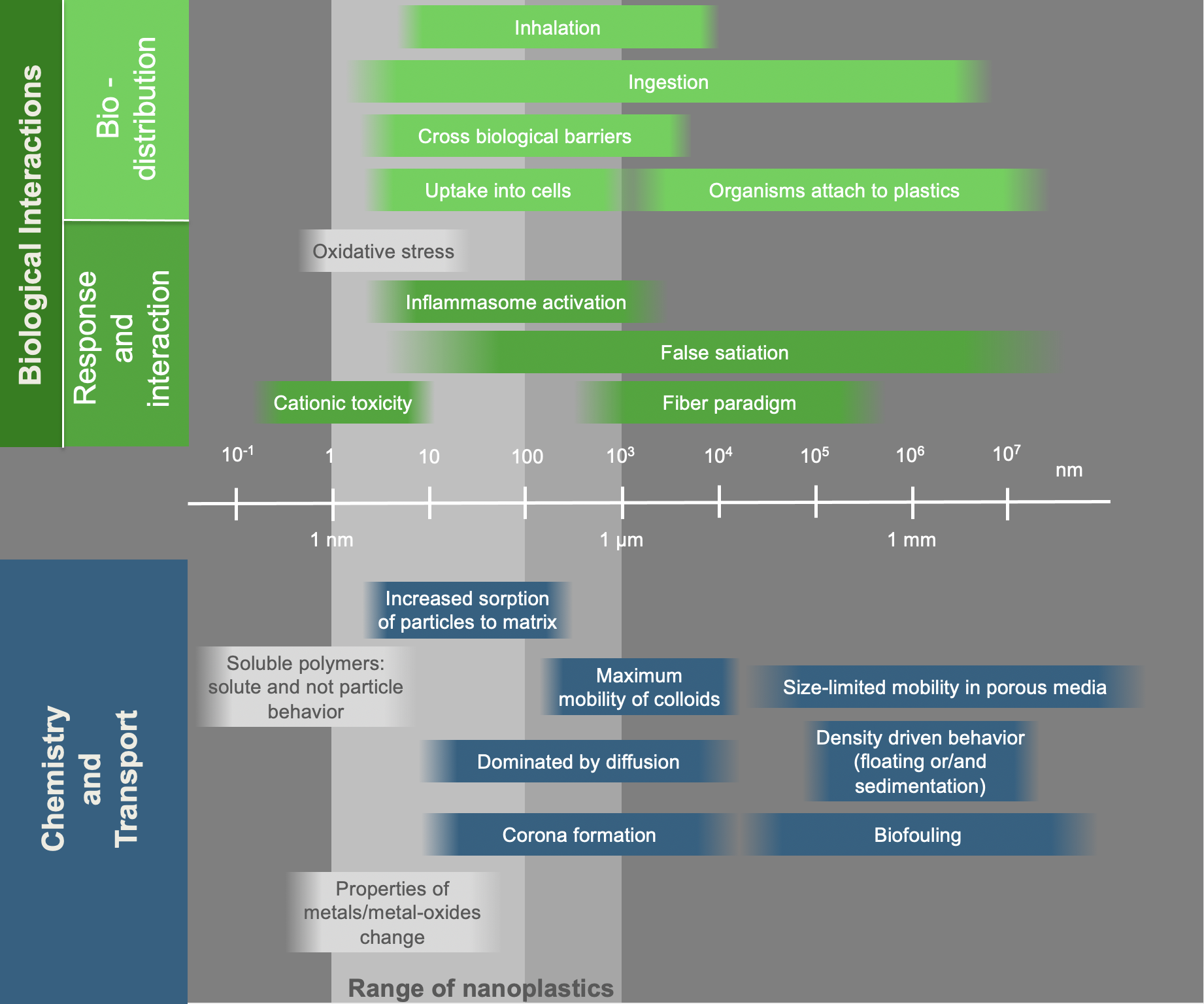Particle Fate, Transport and Transformations

Particles are an important and crucial component of any natural system: in air, water, sediment and soils. Natural nanomaterials far outnumber engineered nanomaterials in the environment, and these natural nanomaterials are present together with anthropogenic particles. Significant progress has been made in the last years to develop analytical methods to quantify some of these materials, mainly those containing metals, at environmentally relevant concentrations in natural samples. He we aim to understand the fate, transport and transformation of these materials in a variety of ecosystems to better understand the consequences of material fluxes throughout the environment.

Nanoplastics and Microplastics
In recent years, stark images in the media of plastic washing up on shorelines and accumulating in cities has underscored the magnitude of mismanaged plastic waste and its impact on the environment. Particulate plastic (nano- and microplastic fragments and fibers) is a continuum of the overall plastic pollution problem because a significant fraction originates from the breakdown of macroplastic items or are released during product use (e.g. fibers from textiles or tire wear). To date, the majority of research on the topic of particulate plastic has been monitoring studies to confirm their presence across multiple environmental compartments, but there are comparatively fewer studies which aimed to develop a systematic understanding of particulate plastic interactions and processes which drive fate and transport in the environment. This requires 1) detailed knowledge about particle properties influencing fate (e.g. material chemistry, size, density, surface characteristics, aging), 2) identification of environmental parameters influencing particle mobility (e.g. biofouling or attachment to organic matter affecting buoyancy) and 3) systematic understanding how these small-scale processes affect particulate plastic fate and transport in larger, more dynamic systems.
There remain several basic research gaps which need to be filled to properly understand the dominant processes which distribute plastic around the globe. Many of these research questions stem from the lack of analytical tools which exist to quickly and accurately sample and measure particulate plastics in complex environmental matrices in the field, which also impacts the feasibility of processes studies based in the laboratory to understand basic behavior. By synthesizing our own particulate plastics with an inorganic tracer incorporated into the polymer, this enables us to track particles using standard methods for trace metals analysis as a proxy for the plastics, thereby bypassing the analytical pitfalls that has hindered particulate plastic research thus far. Furthermore, as we are able to more quickly, easily and accurately quantify the plastic in complex environmental matrices, an increased number of experimental replicates can be performed in a variety of process studies, thus allowing for stronger results with statistical backing.
Select projects in this research line
- Transport through external page waste water treatment plants and external page drinking water treatment plants
- Transport through external page porous media and soils
- Settling dynamics of freshwater in freshwater systems
- Eco-corona formation on plastics
- Impacts of plastics on soil biophysical properties and impacts on nutrient leching
- Entrapment of nanoplastics and microplastics in Arctic sea ice
- Impacts of atmospheric microplastics and nanoplastics on external page cloud formation processes
- Release of external page microplastic fibers from textiles and external page textile mills
Engineered Nanomaterials
Assessing the risks of engineered nanomaterials has been almost exclusively focused on the pristine, as-produced materials with far fewer studies delving into more complex, real world scenarios. However, when considering a life-cycle perspective, it is clear that engineerd nanomaterials released from commercial products during manufacturing, use and disposal are far more relevant both in terms of more realistic environmental fate and transport as well as environmental risk. In this research line, we address key alterations and transformation processes that affect engineerd nanomaterilas through the life-cycle of various nano-enabled consumer products and how this may impact thier fate and tranport in the environment, as well as biolgoical interactions. Furthermore, we develop nanometrology tools to measure particles in dilute concentrations and in complex matrices.
Select projects in this reserach line
- Development of nanometrology tools, such as external page single particle ICP-MS, assymetical field flow fractionan (external page AF4), and naoparticle tracking analysis (external page NTA)
- Dissolution and transport of external page nanomaterials in freshwater systems
- Transformations and external page release of silver nanoparticles from textiles, including external page sequential aging processes and external page landfilling
- Aging and transformation processes of engineered nanomaterials external page through thier life cycle
- Modeling external page emissions of nanomaterials
